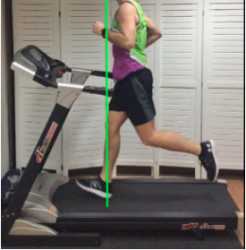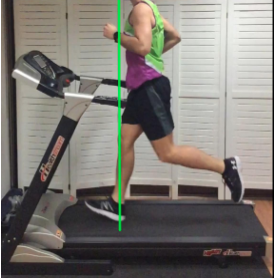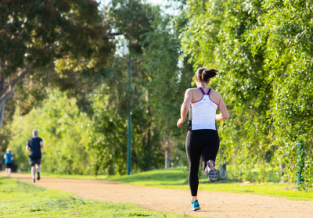Runners Beware of the Over-Stride
Published on
05 Jun 2019

Call us on: (03) 9975 4133
Our Rehabilitation Physiotherapist Dave Palmer is also a qualified Run Coach. With years of experience in the field of running he has a few key points to make about the over-stride in our running community and its significant effects on injury.
Our Rehabilitation Physiotherapist Dave Palmer is also a qualified Run Coach. With years of experience in the field of running he has a few key points to make about the over-stride in our running community and its significant effects on injury.
What is over-striding?
Over-striding is when your initial point of contact with the ground is in front of your centre of mass. When this occurs there is an increase in vertical ground reaction force and braking impulse.
So what in the name of Paula Radcliffe’s bobbing head does THAT mean? Well, thanks to my fellow countryman Sir Isaac Newton’s third law of motion, we know that “every action has an equal but opposite reaction”. You may have unwittingly experienced something like this when telling your partner you were going for “one pint” after work and, having stumbled home eight hours later, found yourself over-striding as you make your way home to find all of your personal belongings on your front lawn in a bin bag…but I digress.
What it means is that there is excess force pushing back up at us from the ground, which our bodies have to try and absorb, and that force is pushing against the direction we want to go in. Neither of those things are ideal, particularly when considering how many of these strides we take over any significant distance. Statistics show that there is approximately 11,000 steps taken in a half marathon of an average amateur runner. That is an awful lot of over-strides.
Why is this relevant to running injuries?
The joint that commonly bears the brunt of Newton’s wrath is the knee joint, particularly the patellofemoral joint (joint between the kneecap and the thigh). When over-striding, we tend to land with a straighter knee, meaning the quadriceps (thigh muscles) aren’t in the optimal position to absorb the force. This creates more force through the joint itself. Landing with a straight knee and a forward tilted pelvis means the hamstrings are also in a lengthened state at initial contact. Again, this is not ideal for the hamstring and likely to add extra compressive force to its attachments, which over time may lead to, or exacerbate, presentations such as proximal hamstring tendinopathy (inflammation of the hamstring tendon where it attaches to your bottom).
If it is the heel that hits the ground first in this over-striding position, the initial force can bypass the body’s first shock absorbing system in the medial longitudinal arch of the foot. This results in more force going through the shin, contributing to shin splints symptoms. We are also striking the ground very close to the insertion of one of the key components of this shock absorbing system: the plantar fascia.

“AH HA!” I hear all you Barefoot brothers and sisters scream, “Not if you FOREFOOT STRIKE!” Well yes, the load pattern is different, but it is now our tiny metatarsals that experience Sir Isaac’s fury, followed by the achilles and calf complex… sorry guys! There is a bit more to it than that.
So the elephant in the room says “What can I do about it?”. That indeed is the million dollar question when it comes to both injury management, Injury prevention, and optimising performance. The follow up blog will provide all the info from Dave.
If you can relate to this all ready then contact us to arrange a Running Assessment with Dave. It will be an invaluable part of your journey as a runner; both to manage injury, prevent injury, and achieve that elusive PB you have been striving for…not striding for!


